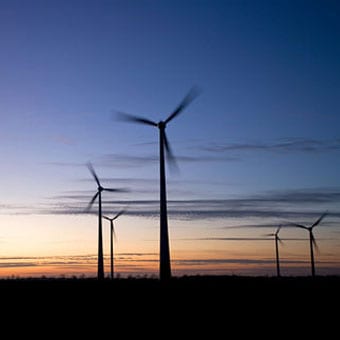Let’s get one thing clear. The political uncertainty created by the Abbott government that has crippled the large scale renewable sector is driven largely by one over-riding consideration: most of them don’t just like wind energy.
That much is made clear by the comments of the country’s leading policy-makers. It is the private view of many executives in the wind industry, and it is certainly the assessment of key independent Senator Nick Xenophon, himself a noted anti-wind campaigner who would like to see the renewable energy target broken down into “bands” reserved for individual technologies.
“I don’t like wind,” Xenophon told a conference in Sydney last week. “And I think that’s an issue for a lot of Coalition MPS. They do not have same antipathy towards solar.”
 There’s plenty of evidence to support that claim. Treasurer Joe Hockey expressed his disdain earlier this year when he said that the wind turbines on the edge of Lake George were “utterly offensive.” He repeated that remarkagain last month.
There’s plenty of evidence to support that claim. Treasurer Joe Hockey expressed his disdain earlier this year when he said that the wind turbines on the edge of Lake George were “utterly offensive.” He repeated that remarkagain last month.
Hockey has never said boo about solar panels, although it was interesting to note last week that the Australian Mint – which comes under the broad Treasury and finance portfolio – announced it would install at least 230kW of solar panels on its rooftop, as long as they couldn’t be seen.
The position of the Coalition’s most prominent anti-wind campaigner, the newly elected member for Hume, Angus Taylor, is also instructive. Taylor has railed against wind projects in the region around Canberra, arguing that they impose costs, cripple manufacturing and are generally bad for the economy.
But he quite likes solar. Just recently he toned down his anti-RET rhetoric to say that he supported rooftop solar and even the large-scale plants such as that recently built near Royalla. But on Taylor’s logic, solar would have the exact same impact on electricity prices that he claims from wind. Clearly, it is a case of visual preference.
And when the web-site Crikey went looking for a wind farm supporter in the ranks of the Coalition last year, it found just one supporter.
The issue is critical as the government and the Labor Party prepare to enter talks (they will start in Canberra from October 20 when parliament resumes) to find a way to break the deadlock over the RET.
Renewable energy executives, including those running wind energy developments, privately concede that it is this antipathy to wind that is holding back the government. They suspect that if the target was all about large-scale solar, it wouldn’t face anything like the resistance, even if the fossil generators protested just as loudly.
Xenophon again: “Solar doesn’t have the same impact (as wind energy). It doesn’t mean you won’t have wind,” he says, but there might be some more thought about how much and where it is located. “We are trying to steer to a sensible compromise. The future is in solar.”
But that is exactly where the yawning gap between the Coalition and the Labor Party lies. The government has ditched its idea of halting the target to new entrants, but seems attached to the “20 per cent”, which in its jargon means a “real 20 per cent”, or a fixed or rolling target much lower than the current target of 41,000GWh by 2020. Labor is prepared to go no further than the 41,000GWh target, apart perhaps from some exemptions from the aluminium industry and possibly a small extension out to 2022.
The Coalition’s position would mean the standstill in large-scale renewables – apart from developments funded by the ACT government’s auction schemes – would continue for another few years. That would mean a lot less wind farms, and possible provide more time for large-scale solar to catch up on costs.
Some suggest it is not far away. But the Coalition’s antipathy towards wind energy is holding back the development of large-scale solar too – Australia ranks around 33rd in the world in the deployment of large-scale solar, even though it should be one of the world leaders.
The Coalition government is heavily influenced by commentators in the Murdoch press, who are resolutely against wind energy and renewables in general, and by shock-jocks such as Alan Jones, where Abbott and Hockey have both expressed disdain for wind in particular (Abbott likened them to mushrooms) and renewables in general.
Jones, of course, is unrepentant. He accuses Ian Macfarlane of being a “dunce” and a mate of pro-renewable Labor types (even though it was Macfarlane who brought an end of the MRET under John Howard, and who has said that wind and solar are not up to to the task), and labeled environment minister Greg Hunt as a “mad little left winger”.
And banding, while it exists in countries such as the UK to assist in the development of ocean energy and offshore wind farms, and under the auction systems used in the SACR, South Africa, Brazil and elsewhere, may not the most economically efficient outcome.
Still, the good news for the solar industry is that the small-scale target looks less likely to be wound back. “Rooftop solar is something that Coalition MPs won’t touch,” Xenophon says, possibly in light of the successful campaign launched by the solar industry.
“If anything, I want to see it expanded,” Xenophon says. He is keen to pursue the idea of tax rebates for low-income households to help them overcome the cost of installation.










